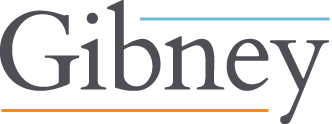Now is the time of year when employers should identify any current or future employees who may require a cap-subject H-1B petition to work in the U.S. Under current rules, the first day to file H-1B cap petitions is April 1, 2019, for an employment start date of October 1, 2019.
What’s New this Year?
This year, employers face greater uncertainty due to the Department of Homeland Security’s recent publication of a proposed rule that could substantially alter the H-1B cap preparation and filing process. Specifically, the Administration has proposed to implement an online pre-registration period. Employers would register intended cap petition beneficiaries online, and U.S. Citizenship and Immigration Services (USCIS) would conduct a lottery of the registrants. Employers would only file H-1B cap petitions for registrants selected in the lottery, during a filing window established by USCIS. For additional details on the proposed changes, see Gibney’s Immigration Alert: USCIS Proposes to Modify FY2020 H-1B Cap Process.
The proposed rule was sent to the Office of Management and Budget (OMB) for review on January 14, 2019. OMB has 90 days to review the rule, and the Administration has indicated it would like to implement the rule by April 2019. However, the Administration has also indicated that it could postpone implementation of the pre-registration process until next year.
What Should Employers Do Now?
Because it is highly uncertain whether USCIS will be able to implement the pre-registration process this year, employers may need to prepare to file petitions with USCIS starting on Monday, April 1, 2019. With increasing demand for H-1B workers, we encourage employers to identify potential H-1B cap cases now and work with immigration counsel to take appropriate steps to ensure timely preparation and filing of cases.
Why Start Planning Now?
Last year, USCIS received more than 190,000 H-1B cap-subject petitions, far surpassing the 85,000 visas available, and the H-1B cap petition quota was reached during the first week of filing for the sixth consecutive year. We anticipate that the H-1B quota will be reached quickly again this year. This means that absent a pre-registration process, employers should plan to file all H-1B cap petitions by April 1, 2019. Prior to filing any petitions, employers must work proactively with counsel to vet cases for eligibility, obtain credential evaluations, and secure Labor Condition Applications from the U.S. Department of Labor.
H-1B Petition Categories
H-1B cap cases generally fall within two categories:
- “Standard” Cap Petitions. The minimum educational requirement is a bachelor’s degree or its equivalent. Standard cases are capped at 65,000 annually.
- U.S. Advanced Degree Petitions. The beneficiary must hold an advanced degree, defined as a master’s degree or higher, awarded by a U.S. university. USCIS allocates an additional 20,000 H-1B visas for U.S. advanced degree cases each fiscal year.
Who Should Be Considered for an H-1B Cap Petition?
Potential beneficiaries include, but are not limited to:
- New hires from overseas
- F-1 students completing a qualifying course of study or working pursuant to Optional Practical Training
- Some L-1 visa holders
- TN, E-3 and other nonimmigrant status holders who wish to change to H-1B status in the coming year
- H-4 Dependent EAD holders. The Administration has indicated that it intends to eliminate work authorization eligibility for the H-4 spouses of certain H-1B visa holders. Employers may wish to consider filing cap petitions for these employees. In addition, employers may wish to evaluate options for L-2 or E dependent EAD holders
- Certain DACA recipients
A Reminder – H-1B Petitions Not Subject to the Cap
Certain H-1B petitions are not counted against the annual cap, including:
- Individuals in H-1B Status Previously Counted Against the Cap. In most cases, individuals who were counted against the cap in a previous fiscal year are not subject to the current cap. This includes extensions of status for current H-1B visa holders, changes in the terms of employment for current H-1B workers, and most petitions for changes of H-1B employers and petitions for concurrent employment in a second H-1B position.
- Petitions for Exempt Organizations. H-1B petitions for employment at institutions of higher learning or related/affiliated nonprofit entities, nonprofit research organizations, and governmental research organizations are cap-exempt.
Gibney will be closely monitoring all proposed changes to policy and procedure and will provide updates. If you have any questions about this alert, please contact your Gibney representative or email info@gibney.com.

